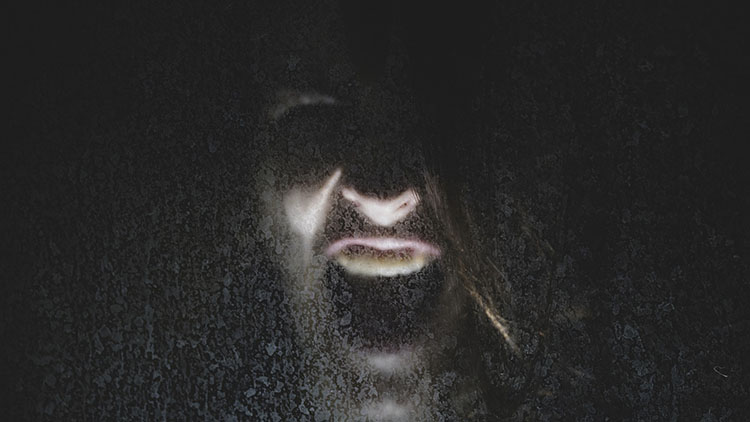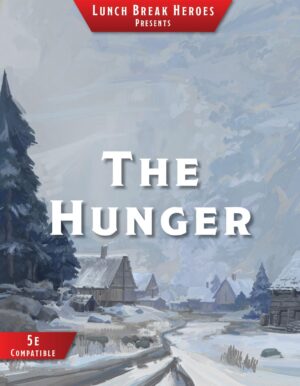Dungeons & Dragons, Storytelling
D&D Sucks for Horror (and here’s what you can do about it)
I’ve heard it said that Dungeons & Dragons is, at its heart, a horror game. After all, what’s scarier than the idea of going down into a dark hole in the ground that’s populated by all manner of beasts, undead, and demons? Who knows what other terrors are lurking in those dark corridors? Who knows if you’ll make it out alive? There’s a lot of tension in that idea.
However, that concept is only scary when you apply it to normal people like you and me. I don’t know about you, but I’d be terrified of going down into a place like that.
But a level three barbarian and his four buddies? Not so much.
Horror is hard to pull off in Dungeons & Dragons because, rather than a horror game at its heart, D&D is really a power fantasy. You take on the role of characters that walk around with swords, armor, and the magical equivalent of tactical nukes. There’s not a lot that stands in their way.
Let’s face it, the movie Alien wouldn’t be very scary if the main character was Captain Marvel instead of Ellen Ripley.
Despite all that, I still love to run horror games in D&D. But because D&D is a power fantasy, there are some things you need to keep in mind if you want to have a good horror game.
Build Characters for Horror
Players: You need to have an active role in the horror. You need to buy into the fact that you’re in a horror game, and play your character appropriately.
In a power fantasy, it’s easy to let the mechanics of the game do all the work. As you play, your character acquires higher level spells and abilities, and so they deal more damage. They also get more hit points, so they can take more damage. Without any extra effort on a player’s part, the character’s might grows, thus fulfilling the power fantasy.
But horror can’t rely solely on mechanics. Sure, you can add mechanics for stress, fear and whatnot, but those are just numbers on a character sheet. To really play in a horror game, you’ve got to give it something extra in how you portray that character and make them a part of the world. The easiest way to do that, is to build a character with horror in mind.
With Curse of Strahd and now Van Richten’s Guide to Ravenloft, we’ve been given lots of great tools for building horror-centric characters. We’ve got spooky backgrounds, creepy lineages, terrible trinkets, and more.
In addition to using those resources, you need embrace fear as a part of your character. Along with bonds and flaws, what are they afraid of? What sends a chill down their spine? What makes them turn heel and run away? Knowing these things gives the Dungeon Master something to scare your character with, and it gives your character something to overcome throughout the course of the game. Characters that aren’t afraid of anything simply do not belong in a horror game.
By using those resources and embracing fear, a character is grounded in the horror of the game right from the start. They feel like they’re a part of the dark and twisted tapestry of the world, rather than being the equivalent of a He-Man doll on the set of A Nightmare Before Christmas.
Scare the Characters
The next thing you need to keep in mind for a good horror game is the fact that Dungeon Masters should never set out to scare the players. Trying to scare a real life player is not only mean, but it’s probably an effort that’s doomed to fail. Instead, you should set out to scare the players’ characters.
If you’ve got a set of characters who’ve been built with horror in mind, then finding things that scare them should be as simple as looking at their character sheet. But implementing those things in a satisfying way is another question entirely.
If a character is scared of spiders, do you just describe a spider crawling across the table? No! Instead, you tell them about the spider-shaped shadow that’s creeping across their bedroom ceiling, flickering in the dying candlelight.
How you introduce horrific elements is important. To help you out, let’s take a look at some methods you can use.
Imbalance of Power
Ripley versus the alien. Laurie versus Michael Meyers. Nancy versus Freddy Krueger. Each of those protagonists is significantly less powerful than the killers that stalk them, and that becomes the root of those movies’ terrifying thrills
Our first method of introducing horror is displaying an imbalance of power. In your game, that imbalance of power can present itself in different ways.
- Characters can be weaker than the big bad guy. This is level one characters coming face-to-face with CR 15 Strahd von Zarovich for the first time. They know he can wipe the floor with them.
- Characters can be vastly outnumbered. This is where invading bodysnatchers have taken over the entire town, and all that’s left is your four party members against the horde.
- Bad guys can have a tool or weapon that spells doom for the characters or their loved ones. This could be a magical artifact, like the Soulmonger from Tomb of Annihilation.
Imbalance of power is especially effective at the first tier of gameplay, when characters are still squishy and a goblin’s critical hit is a big deal. But as they gain levels, the balance of power begins to shift in favor of the characters. And then this way of introducing horror goes out the window. At that point, you’re in the thick of the power fantasy of D&D, and you need to start looking at our next method.
The horror of the unknown
Our next method deals with things that go bump in the night. The shadows that creep across the ceiling. The unexpected movement out of the corner of your eye. This is suspense, and it can carry you from level one to twenty if you play your cards right.
Suspense is all about anticipation and the fear of the unknown.
In a tabletop RPG, you can create suspense with descriptions of an area. Things characters see that they either can’t explain, understand, or that make them wonder what horrors await them in the near future.
Let’s say your players enter into the first room of a dungeon. Scattered around the room, they see skeletons and other corpses that look like they might have been adventurers. Each one of them is split in two, right down the middle. A scene like this gives your players a clue to the dangers that lie ahead, but doesn’t tell them exactly what’s in store.
You can do the same thing with traps. As characters are walking down a hall, you can let them see a trap that’s already been sprung, which still has the body of a previous adventurer attached to it.
This kind of suspense is a great tool for gaming and for storytelling. Not only does it keep your players on the edge of their seats, wondering “What is this thing that can split adventurers in half and where the heck are the traps,” but it also foreshadows things that they’re going to run into later.
And it’s that foreshadowing that is at the heart of suspense.
Without foreshadowing, all that you’re left with is scary things suddenly that jump out at the characters and go “Boo!”. And while those jump scares work well for low budget horror movies, they just don’t translate to tabletop gaming.
So don’t be afraid to give your players a small preview of what’s in store for them. Just a little. Just enough to make them wonder, “What did we get ourselves into?”
Conclusion
Running and playing in a horror game with a system that’s built to be a power fantasy isn’t easy. It requires preparation, cooperation, and the ability to look beyond the numbers of a character sheet.
Players: You’ve got to embody your characters and embrace their fears. Don’t shy away from letting them be flawed and terrified; no one gets points in a horror game for being Superman.
Dungeon Masters: Use foreshadowing to create suspense. And for the love of all that is holy… Stay away from jump scares.
Check out these adventures from Lunch Break Heroes to satisfy your horror kick!


